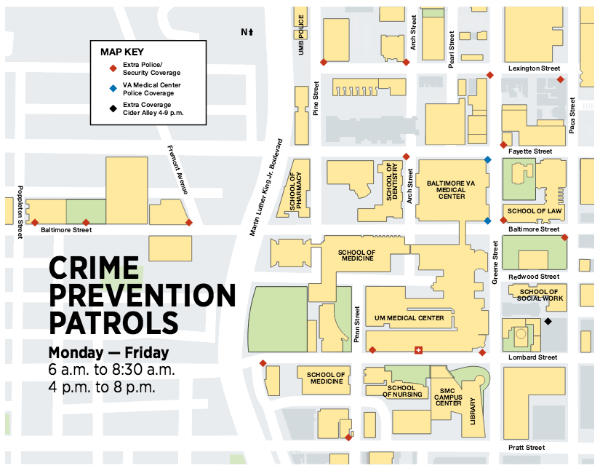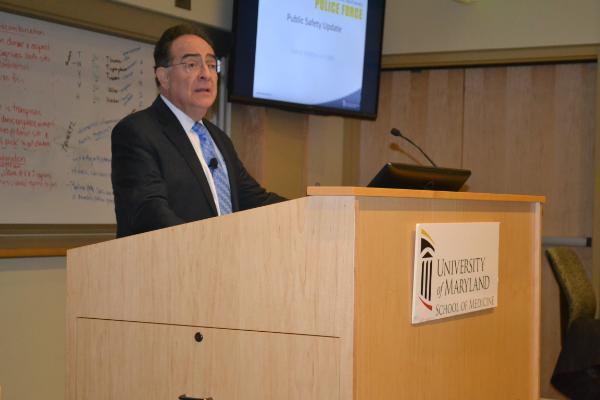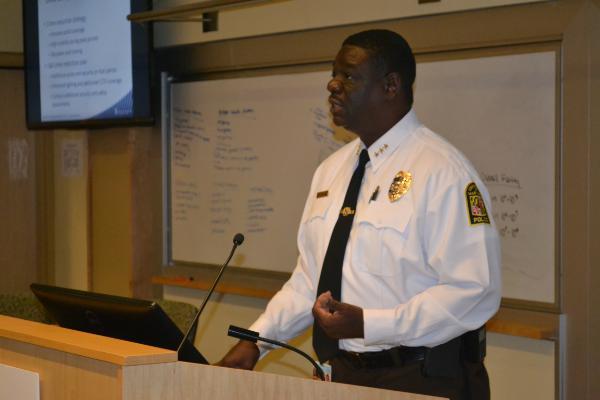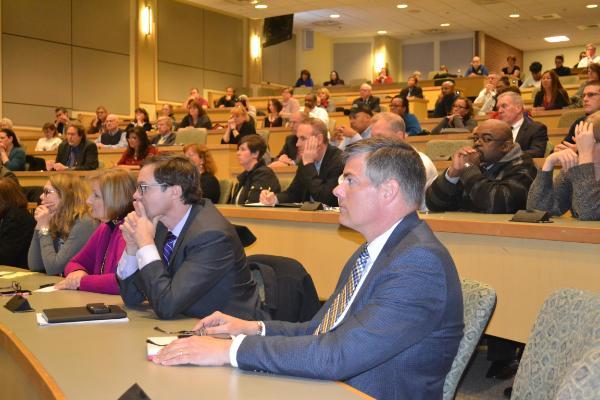About UMB History, highlights, administration, news, fast facts
- Accountability and Compliance
- Administration and Finance
- Center for Information Technology Services
- Communications and Public Affairs
- Community Engagement
- Equity, Diversity, and Inclusion
- External Relations
- Government Affairs
- Philanthropy
- Office of the President
- Office of the Provost
- Research and Development
- University Counsel
- Office of the President
- Administrative Officers
- Deans
- Boards of Visitors
- Faculty Senate
- Staff Senate
- University Counsel



 Dr. Perman: As promised, I do want to focus on campus safety. Chief Williams is away because of deaths in the family and I’m very glad to have Deputy Chief Milland Reed, who is going to provide you with data and give you some thoughts on where we are at this point. I think you will find from the data that in terms of the campus proper, we are going in the right direction compared to previous years. It probably doesn’t feel that way because we send out a lot of alerts. The principal feedback I’ve gotten on alerts is you send out too many, since many of these alerts are things that happen close to campus but off campus.
Dr. Perman: As promised, I do want to focus on campus safety. Chief Williams is away because of deaths in the family and I’m very glad to have Deputy Chief Milland Reed, who is going to provide you with data and give you some thoughts on where we are at this point. I think you will find from the data that in terms of the campus proper, we are going in the right direction compared to previous years. It probably doesn’t feel that way because we send out a lot of alerts. The principal feedback I’ve gotten on alerts is you send out too many, since many of these alerts are things that happen close to campus but off campus.
 Col. Reed: We do address what we call quality-of-life issues, urinating, drunkenness, etc. Folks that are panhandling, we don’t like it but there are laws protecting people who are doing that. We have to be careful when we engage folks who are doing that activity. Urinating in public is an offense that we can do something about. But we don’t target anyone. We really prioritize what we are doing out there. We’re looking to reduce crime. We don’t want an environment where we’re just pulling people off the street. There’s a large homeless population in Baltimore City and we deal with that. Along MLK Boulevard, we have folks out there panhandling all day. It’s a city problem we’re dealing with as well, but as far as crime, the police officers are out there. They are not static.
Col. Reed: We do address what we call quality-of-life issues, urinating, drunkenness, etc. Folks that are panhandling, we don’t like it but there are laws protecting people who are doing that. We have to be careful when we engage folks who are doing that activity. Urinating in public is an offense that we can do something about. But we don’t target anyone. We really prioritize what we are doing out there. We’re looking to reduce crime. We don’t want an environment where we’re just pulling people off the street. There’s a large homeless population in Baltimore City and we deal with that. Along MLK Boulevard, we have folks out there panhandling all day. It’s a city problem we’re dealing with as well, but as far as crime, the police officers are out there. They are not static. Audience member: Some of the officers are really good, but one or two …
Audience member: Some of the officers are really good, but one or two …